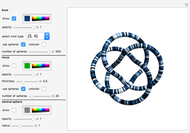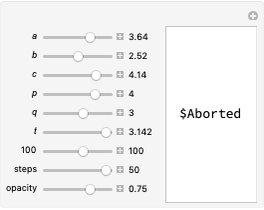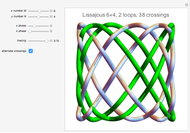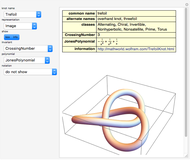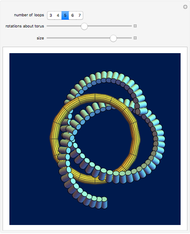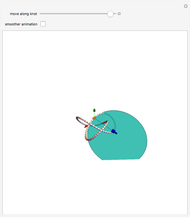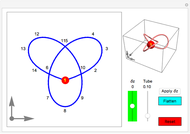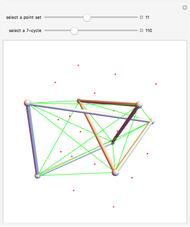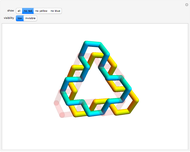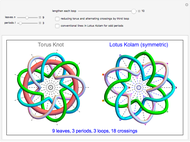Knot Pattern Similar to a Lotus Kolam

Requires a Wolfram Notebook System
Interact on desktop, mobile and cloud with the free Wolfram Player or other Wolfram Language products.
This Demonstration shows two figures. On the left is a torus knot (coil or rosette) pattern, winding a thickened curve in a spiral around a torus plotted using parametric equations.
[more]
Contributed by: Shojiro Nagata (December 2014)
InterVision Institute in Japan
Open content licensed under CC BY-NC-SA
Snapshots
Details
When the number of loops (components)  is greater than 1, up to three loops are drawn, in the order: purple, green, and blue. The number of crossings is
is greater than 1, up to three loops are drawn, in the order: purple, green, and blue. The number of crossings is  . The crossings alternate if selected by the checkbox, changing the modulation frequency of
. The crossings alternate if selected by the checkbox, changing the modulation frequency of  to
to  .
.
An odd period makes a symmetrical form in both the torus knot and the Lotus Kolam and has additional radial axes of half-interval angles and extra inner dots for each axis. The asymmetric form of the Lotus Kolam removes half-interval radial axes and alternating crossings and shows only one loop of odd periods.
For more information on these patterns, see [1, 2]. For colored animations of some Lotus Kolams, see [3, 4].
References
[1] S. Nagata, "Loop Patterns of Lotus Kolam, Phyllotaxis, Designs in Renaissance and Knot Patterns", Forma, Special Issue 2016 (forthcoming)
[2] S. Nagata, "Loop Patterns in Japan and Asia," Forma, 30(1), 2015 pp. 19–33. www.scipress.org/journals/forma/pdf/3001/30010019.pdf.
[3] shonan0. Lotus Kolam.wmv [Video]. (Jan 21, 2016) www.youtube.com/watch?v=yao6jP8ItWc.
[4] shonan0. LotusVideo2.wmv [Video]. (Jan 21, 2016) www.youtube.com/watch?v=JZsFwUkJM5Y.
Permanent Citation









